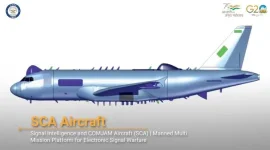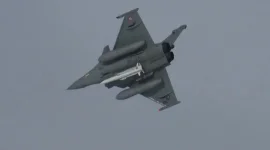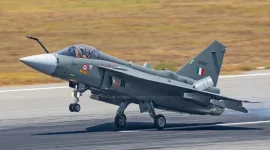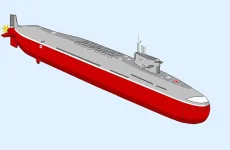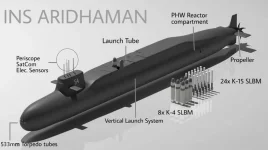- Views: 914
- Replies: 8
New photographs offering the most detailed view so far of China's next-generation fighter jet have generated significant interest among aviation observers and defence analysts. The aircraft, developed by Shenyang Aircraft Corporation (SAC) and provisionally named J-50 "Shengad" by watchers, represents a major step in China's military aviation capabilities.
Seen undergoing flight tests near Shenyang in late 2024, this advanced aircraft showcases features expected of a sixth-generation fighter, including a tailless design, sophisticated optical systems, and advanced aerodynamics, signalling the People’s Liberation Army Air Force's (PLAAF) ambition for future air power.
A defining characteristic of the J-50 is its lack of traditional vertical tail fins, a design choice increasingly associated with sixth-generation aircraft that prioritises stealth and advanced maneuverability over conventional stability methods. Instead, sophisticated flight control systems are expected to manage the aircraft's agility. This tailless structure is combined with a distinctive lambda-wing shape.
Recent images also show that the aircraft possesses movable wingtips, with one appearing deflected during flight. These articulated surfaces likely function as control elements, boosting maneuverability while maintaining the aircraft's low visibility to radar.
Further enhancing its flight performance are two-dimensional thrust-vectoring control (TVC) nozzles on the engines, suggesting exceptional agility across different speed ranges, potentially matching capabilities seen in aircraft like the American F-22.
Further examination of the J-50's structure highlights other advanced elements. It incorporates Diverterless Supersonic Inlets (DSI) on the fuselage sides; these inlets manage airflow to the twin engines efficiently while reducing the aircraft's radar signature, a key component of its stealth design.
A noticeable bulge situated beneath the aircraft's sharply angled nose strongly suggests the presence of a 360-degree Electro-Optical Targeting System (EOTS). Similar to systems found on the F-35 and China's own J-20, this would provide the pilot with comprehensive situational awareness and targeting capabilities, covering all angles without exclusive reliance on radar, thereby improving its ability to operate undetected.
Details on the aircraft's underside also provide clues about its design and role. The use of a dual-wheel nose landing gear indicates a sturdy construction, potentially suitable for aircraft carrier deployment or operations from less prepared runways.
In addition to a main internal weapons bay, supplementary bays appear integrated into the sides, hinting at a flexible weapons load. Experts believe these could carry advanced air-to-air missiles, like the PL-15 or newer types, as well as ground-attack munitions, positioning the J-50 as a versatile aircraft capable of both air dominance and strike missions. Storing weapons internally is crucial for maintaining stealth while penetrating contested airspace.
While the precise designation and operational role of the J-50 are yet to be officially confirmed – whether it is a dedicated sixth-generation platform or an advancement based on prior SAC designs like the J-35 – its public flight on December 26, 2024, aligning with Mao Zedong's birthday, appears intentional. Displaying the aircraft openly suggests China's growing confidence in its advanced aerospace technology.
The J-50 is powered by two engines, likely advanced versions of the WS-15, expected to provide high thrust and the ability for sustained supersonic flight without afterburners (supercruise), a common benchmark for next-generation fighters.
The appearance of the J-50 around the same time as another prototype, Chengdu's J-36, indicates China may be pursuing multiple designs for its future air combat needs.
While the J-36 is reportedly a larger, tailless aircraft possibly featuring three engines, the J-50's seemingly more compact and agile design might point towards a different but complementary role, perhaps focused on air superiority or integration with naval forces.
Both aircraft represent a significant technological leap for China, moving beyond its current fifth-generation fighters like the J-20 and J-35 by incorporating enhanced stealth, advanced sensor integration, and networked warfare capabilities common to sixth-generation concepts worldwide.


